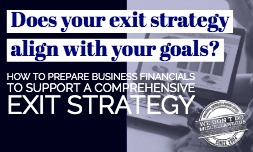Migrating your financial management system is a significant step for any business. Moving to a powerful, cloud-based solution like Sage Intacct promises greater efficiency, deeper insights, and enhanced scalability.
However, a successful transition requires careful planning and a clear understanding of the process. To ensure a smooth migration, it's essential to address several key considerations before you begin. This guide outlines the critical factors your business needs to evaluate for a seamless move to Intacct.
Understanding the Benefits of Intacct
Before diving into the technical aspects of migration, it's crucial to align your team on why you're making the change. Sage Intacct offers a host of advantages over traditional, on-premise accounting software.
Key benefits include:
- Real-time Visibility: Access up-to-the-minute financial data and performance metrics from anywhere.
- Automation: Streamline core financial processes like accounts payable, accounts receivable, and financial close to save time and reduce errors.
- Scalability: The system grows with your business, easily accommodating new entities, currencies, and transaction volumes without a drop in performance.
- Deep Insights: Utilize multi-dimensional reporting and customizable dashboards to gain a clearer understanding of your financial health and operational drivers.
By clearly defining the benefits you aim to achieve, you can set measurable goals for the migration and secure buy-in from stakeholders across the organization.
Assess Your Current Financial Processes
A migration provides the perfect opportunity to re-evaluate and improve your existing workflows. Don't simply replicate your old processes in a new system. Instead, take the time to map out your current financial operations.
Ask critical questions:
- What are our biggest pain points and bottlenecks?
- Which manual tasks consume the most time?
- Are there reporting gaps that hinder decision-making?
- How can we leverage Intacct’s features to optimize these processes?
This assessment helps you design more efficient workflows within Intacct, ensuring you get the most value from your investment from day one. It’s about transformation, not just transfer.
Ensure Data Accuracy and Integrity
Your financial data is one of your most valuable assets. The success of your Intacct implementation depends heavily on the quality of the data you bring over. Before migration, you must undertake a thorough data cleansing process.
This involves:
- Identifying Critical Data: Determine which historical data is essential to migrate. This typically includes master records like the chart of accounts, customer and vendor lists, and open transactions.
- Cleaning the Data: Review your existing data for duplicates, inaccuracies, and outdated information. Standardize formats and remove any redundant records.
- Archiving Old Data: Decide on a strategy for archiving historical data that doesn't need to be in the live Intacct environment but must be retained for compliance.
A clean data set ensures that your reports are accurate and your team can trust the information within the new system.
Plan for Training and Onboarding
Technology is only as effective as the people who use it. A comprehensive training and onboarding plan is non-negotiable for a successful migration. Your team needs to feel confident and competent using Sage Intacct to perform their daily tasks.
Your training plan should:
- Be Role-Specific: Different users will interact with Intacct in different ways. Tailor training sessions to specific roles, such as AP clerks, controllers, and executives.
- Start Early: Involve key users in the implementation process to build familiarity and create internal champions for the new system.
- Provide Ongoing Support: Offer resources like user guides, Q&A sessions, and access to support channels after the go-live date to address questions as they arise.
Proper training minimizes disruption, accelerates user adoption, and ensures your team can leverage the full power of the platform.
Work with a Trusted Implementation Partner
Migrating to a sophisticated ERP like Sage Intacct is not a simple DIY project. Partnering with an experienced implementation consultant is one of the most important decisions you will make. A skilled partner brings technical expertise and strategic guidance to the table.
A good partner will:
- Understand Your Business: They will take the time to learn about your unique challenges and goals.
- Manage the Project: They will create a detailed project plan, manage timelines, and keep the migration on track.
- Configure the System: They will configure Intacct to support your optimized workflows and reporting needs.
- Provide Expertise: They have deep knowledge of both accounting principles and the Intacct platform, helping you avoid common pitfalls.
Choosing the right implementation partner can be the difference between a frustrating, drawn-out process and a smooth, successful transition that delivers immediate value. By carefully considering these key areas, your business can confidently navigate the migration to Sage Intacct and unlock a new level of financial efficiency and insight.














